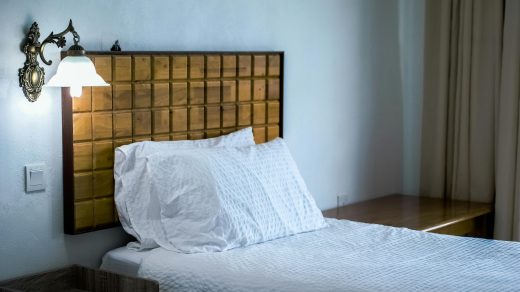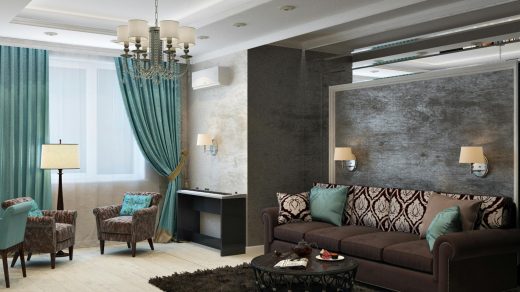Bringing Elegance to Your Kitchen with a Bright Chandelier
A bright chandelier can dramatically transform the atmosphere of a kitchen, elevating it from a mere cooking space to a vibrant hub of activity and social interaction. Traditionally, kitchens were often seen as functional areas, primarily focused on meal preparation. However, the introduction of a chandelier can shift this perception, making the kitchen a focal point of the home where family and friends gather.
The interplay of light and design creates an inviting ambiance that encourages conversation and connection, turning everyday cooking into a delightful experience. Moreover, a chandelier serves not only as a source of illumination but also as a statement piece that reflects personal style. The right chandelier can harmonize with the overall aesthetic of the kitchen, whether it be modern, rustic, or traditional.
For instance, a sleek, contemporary chandelier Jornoshop with clean lines can enhance a minimalist kitchen, while an ornate, vintage-style fixture can add character to a farmhouse-inspired space. The visual impact of a well-placed chandelier can elevate the kitchen’s design, making it an integral part of the home’s overall decor.
Choosing the Right Chandelier for Your Kitchen
Size Matters
The dimensions of the chandelier should be proportionate to the kitchen space; a large chandelier in a small kitchen can overwhelm the area, while a tiny fixture in a spacious kitchen may get lost. A general rule of thumb is to add the room’s dimensions together (in feet) and convert that number to inches to determine an appropriate diameter for the chandelier. For example, if your kitchen is 12 feet by 15 feet, a chandelier with a diameter of around 27 inches would be suitable.
Style and Aesthetic
Style is another critical aspect to consider when choosing a chandelier. The design should complement existing elements in the kitchen, such as cabinetry, countertops, and appliances. For instance, if your kitchen features stainless steel appliances and sleek cabinetry, a modern chandelier with metallic finishes would create a cohesive look. Conversely, if your kitchen has wooden elements and vintage decor, a wrought iron or glass chandelier could enhance its charm.
Functionality and Lighting Options
Additionally, consider the type of lighting you desire; some chandeliers offer adjustable brightness or multiple light sources, allowing for versatility in illumination.
Installing and Hanging Your Chandelier
The installation process for hanging a chandelier can vary based on the complexity of the fixture and the existing electrical setup in your kitchen. Before beginning installation, it is essential to ensure that the electrical box is rated to support the weight of the chandelier. If you are replacing an existing light fixture, turn off the power at the circuit breaker to avoid any electrical hazards.
Carefully remove the old fixture and disconnect the wiring before preparing to install the new chandelier. When hanging the chandelier, consider its height in relation to the kitchen island or dining table below. A common guideline is to hang the chandelier approximately 30 to 36 inches above the surface of the table or countertop.
This height allows for adequate illumination while ensuring that it does not obstruct views or create an overwhelming presence in the space. If your chandelier has multiple tiers or arms, ensure that it is centered over the focal point of the room for maximum visual impact. Once securely mounted and wired, restore power and test the fixture to ensure it operates correctly.
Maintenance and Cleaning Tips for Your Chandelier
Maintaining a chandelier is essential for preserving its beauty and functionality over time. Regular cleaning helps prevent dust accumulation and tarnishing, which can dull its shine and diminish its overall appeal. Depending on the material of your chandelier—be it crystal, glass, or metal—the cleaning method may vary.
For crystal chandeliers, using a soft cloth dampened with a mixture of water and mild dish soap can effectively remove grime without scratching delicate surfaces. It is advisable to clean each crystal individually to ensure thoroughness. In addition to regular cleaning, periodic inspections are crucial for maintaining your chandelier’s integrity.
Check for loose connections or damaged wiring that could pose safety risks. If you notice flickering lights or unusual sounds when operating the fixture, it may be time to consult an electrician for repairs. Furthermore, consider replacing bulbs with energy-efficient options to reduce energy consumption while maintaining brightness.
By following these maintenance tips, you can ensure that your chandelier remains a stunning centerpiece in your kitchen for years to come.
Creating a Focal Point with Your Chandelier
A chandelier can serve as an eye-catching focal point in your kitchen, drawing attention and enhancing the overall design aesthetic. To achieve this effect, consider positioning the chandelier above key areas such as an island or dining table where it can be appreciated from various angles. The height at which you hang the chandelier also plays a significant role; too high may diminish its impact, while too low can create an overwhelming presence.
In addition to placement, consider how other design elements in your kitchen interact with the chandelier. For instance, if your kitchen features bold colors or intricate patterns, choose a chandelier that complements rather than competes with these elements. A simple yet elegant design can provide balance in a busy space, while an ornate fixture can add drama to a more subdued environment.
By thoughtfully considering these aspects, you can create a harmonious focal point that enhances both functionality and aesthetics.
Complementing Your Kitchen Decor with a Chandelier
To achieve a cohesive look in your kitchen, it is essential to select a chandelier that complements existing decor elements. This involves considering color schemes, materials, and overall design themes present in your kitchen. For example, if your kitchen features warm wood tones and earthy colors, a chandelier made from wrought iron or antique brass can enhance this rustic charm while providing an inviting glow.
Additionally, think about how your chandelier interacts with other lighting fixtures in the space. Layering different types of lighting—such as recessed lights or under-cabinet lighting—can create depth and dimension while allowing for flexibility in illumination levels. A well-chosen chandelier can serve as both a primary light source and an accent piece that ties together various design elements throughout the kitchen.
Enhancing Your Kitchen Lighting with a Chandelier
Incorporating a chandelier into your kitchen lighting scheme can significantly enhance both functionality and ambiance. Unlike standard overhead lights that provide uniform illumination, chandeliers offer versatility by directing light in various directions. This characteristic allows for focused lighting over specific areas like countertops or dining spaces while creating an inviting atmosphere throughout the room.
When selecting a chandelier for enhanced lighting, consider options with adjustable brightness or multiple light sources. Dimmable chandeliers allow you to customize illumination levels based on different activities—bright light for cooking and softer light for entertaining guests. Additionally, choosing bulbs with warm color temperatures can create a cozy environment that encourages relaxation and social interaction within the kitchen space.
Budget-Friendly Options for Adding Elegance to Your Kitchen
Adding elegance to your kitchen with a chandelier doesn’t have to break the bank; there are numerous budget-friendly options available that can still make a significant impact on your space. One approach is to explore local thrift stores or online marketplaces for second-hand chandeliers that can be refurbished or updated with new finishes or bulbs. A little creativity can transform an outdated fixture into a stunning centerpiece that reflects your personal style.
Another cost-effective option is to consider smaller chandeliers or pendant lights that provide similar aesthetic appeal without overwhelming your budget or space. These fixtures can be strategically placed above islands or dining areas to create visual interest without requiring extensive renovations or electrical work. Additionally, many retailers offer affordable replicas of high-end designs that capture the essence of luxury without the hefty price tag.
By exploring these options, you can achieve an elegant look in your kitchen while staying within budget constraints.




